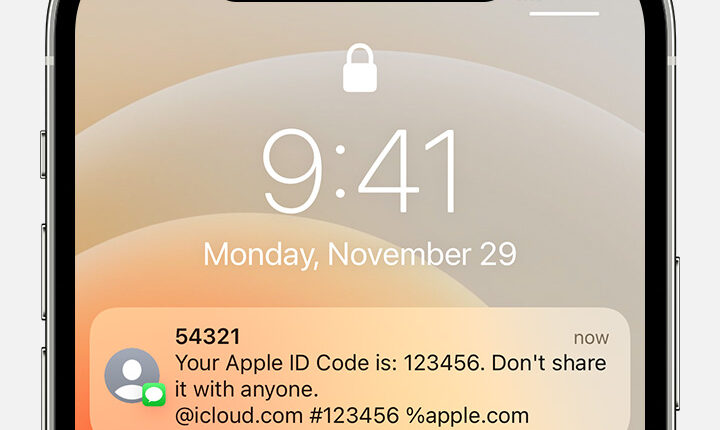MILLIONS of iPhone owners may be making some serious privacy mistakes – but they’re easy enough to fix.
It’s important to sort your privacy out or it could cost you in the log run.
A privacy blunder can be embarrassing if your sensitive texts, photos or apps end up on display.
But in a world of cyber-crime, you could also find your private info being used against you for fraud, blackmail, or other criminal activities.
So if you want to avoid a major headache, it’s best to review your iPhone settings as soon as possible.
Here are three easy tweaks to help keep your private info safe.


#1 Lock down your Apple ID
This one is easy! Add two-factor authentication to your Apple ID.
Setting up two-factor authentication (2FA) is one of the easiest ways to stop hackers in their tracks.
It protects your Apple account by requiring an extra level of verification before logging in – on top of your password.
It means that if your password has been hacked (or guessed), your account will still be safe.
Most read in Tech
You can activate 2FA on your Apple ID.
- Go to Settings > [your name] > Password & Security.
- Tap Turn On Two-Factor Authentication.
- Tap Continue.
- Enter the phone number you want to receive verification codes on when you sign in. You can choose to receive the codes by text message or via an automated phone call.
- Tap Next.
- Enter the verification code to verify your phone number and turn on two-factor authentication.
This can help you protect your most private information.
#2 Protect your passwords
iCloud Keychain remembers the passwords you type on your iPhone, encrypts them, and stores them in the cloud.
So you can choose very strong passwords for websites and apps without having to remember them – your phone will simply enter them for you at log in.
This is one of the best defences against hackers.
“iCloud Keychain remembers things so that you don’t have to,” Apple explains.
“It auto-fills your information – like your Safari usernames and passwords, credit cards, Wi-Fi networks and social log-ins – on any device that you approve.
“iCloud Keychain stores your passwords and credit card information in such a way that Apple cannot read or access them.”
And the Safari web browser now has a special feature called Strong Passwords.
When you sign up to a service on Safari, you’ll get an option to use an auto-generated password that’s very difficult for hackers to crack.
On your iPhone, iPad or iPod Touch, follow these steps:
- Tap Settings > [your name] > iCloud (on iOS 10.2 or earlier, it’s just Settings > iCloud)
- Tap Keychain
- Tap the slider to turn on iCloud Keychain
#3 Keep your iCloud safe
Apple recently introduced a new feature to protect your iCloud (where all your photos are backed up) called Advanced Data Protection.
If you’re a long-time iPhone user, you’re likely backing up some content in iCloud automatically.
Often that means your texts sent over iMessage, the images in your Photos app, and your emails.
All of this is extremely private media and information that you wouldn’t want getting into the wrong hands.
Once it’s turned on, Apple is unable to access 23 different categories of data.
It means it’s much harder for highly advanced hackers to spy on what’s inside your iCloud.
But it also stops governments from being able to request info on what you’re doing in the majority of cases.
Here’s the full list of fully end-to-end encrypted data types under Advanced Data Protection:
- Cloud Backup (including device and Messages backup)
- iCloud Drive
- Photos
- Notes
- Reminders
- Safari
- Siri Shortcuts
- Voice Memos
- Wallet passes
- Passwords and Keychain
- Health data
- Home data
- Messages in iCloud
- Payment information
- Apple Card transactions
- Maps
- QuickType Keyboard learned vocabulary
- Safari
- Screen Time
- Siri information
- Wi-Fi passwords
- W1 and H1 Bluetooth keys
- Memoji
The only three categories that don’t get full protection are iCloud Mail, Contacts and Calendars.
For everything else, Apple doesn’t hold encryption keys.
So if a police force asked for your photos, Apple wouldn’t be able to comply.
And if a hacker managed to break into Apple’s systems, they wouldn’t be able to snoop on your messages.
The obvious problem with advanced Data Protection is that Apple will struggle to help you recover your account.
So you need to set up extra safeguards before you turn it on, otherwise you risk being locked out of your account.
That means setting up Account Recovery.
You’ll need to goto Settings > iCloud > Advanced Data Protection.
Then tap up Account Recovery to make sure your account is restorable.
This could mean adding a recovery contact who can help you unlock your account.
Or it could mean generating a 28-character recovery key that you need to write down – helping you eventually unlock your account.
Once you’ve got Account Recovery enabled, you can then turn on Advanced Data Protection.


This should significantly improve your privacy, especially if you have lots of info saved to iCloud.
Best Phone and Gadget tips and hacks

Looking for tips and hacks for your phone? Want to find those secret features within social media apps? We have you covered…
We pay for your stories! Do you have a story for The Sun Online Tech & Science team? Email us at [email protected]
This post first appeared on Thesun.co.uk









